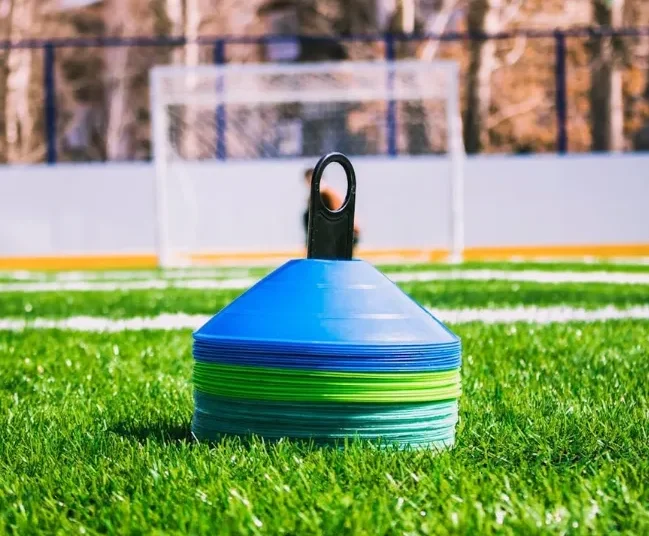As a soccer parent with two kids in the game, I’ve lived through those tough seasons where losses pile up and confidence fades. It’s not easy watching your child struggle, and like many parents, I’ve wrestled with how to help without stepping on the coach’s toes. Over the years, I’ve discovered a few effective, realistic ways to nurture a young player’s understanding of the game—without making it stressful or complicated.
Step 1: Simplify the Learning Focus
In the beginning, I tried to teach my sons everything at once—positioning, passing, defending, even mentality. It backfired. Kids don’t learn well when they’re overloaded. What really worked was narrowing the focus to just one or two key ideas each season and reinforcing them regularly.
For instance, one year we concentrated on defending between the ball and the goal, along with breaking lines through smart passing. Another year, we focused on scanning the field before receiving the ball. Those smaller goals built up gradually, and before long, their soccer intelligence grew naturally.
Step 2: Teach the Core Principles of Play
If you want to raise a player who truly understands the game, start with the universal “principles of play.” These are the building blocks coaches around the world use to explain good soccer habits.
When Attacking:
Width: Spread out to stretch defenders.
Depth: Support from behind and ahead of the ball.
Penetration: Move forward—whether by passing, dribbling, or shooting.
Support: Always give your teammate safe passing options.
When Defending:
Delay: Slow the attacker down—don’t dive in.
Pressure: Closest player closes the ball quickly.
Cover: Teammates provide backup if the first defender gets beaten.
Balance: Stay organized and don’t overload one side.
During Transition:
Winning the Ball: Decide quickly—attack immediately or keep possession.
Losing the Ball: Try to win it back right away or regroup defensively.
Once my kids began to understand these concepts, the game stopped being chaos and became a series of smart decisions. Small-sided games like 3v3 or indoor soccer are great environments to reinforce these principles since situations repeat often and learning happens fast.
Step 3: Volunteer to Coach Small Games
You don’t need professional credentials to make a difference. I learned the most by volunteering in small formats like 3v3 and futsal leagues. These setups are perfect because:
Kids get more touches.
Mistakes—and lessons—happen faster.
The smaller field allows you to teach big ideas like spacing and anticipation without overwhelming anyone.
Plus, the lower-pressure environment makes it easier for parents to coach confidently and for kids to play more freely.
Step 4: Use Game Footage the Right Way
Watching recorded games with your child can be powerful—but only if it’s done constructively. Instead of pointing out errors, ask three simple questions:
What did you do well?
What could you do better?
What’s one thing a teammate did well or could improve?
This approach shifts the focus from criticism to self-assessment. It teaches your child to analyze the game and appreciate teammates’ efforts, building leadership skills as well as soccer IQ.
Step 5: Turn Lessons Into Measurable Progress
Kids respond to clear goals. Pick a few simple metrics to track over time—no fancy apps needed. Some useful ones include:
Pass completion percentage
Number of times they scanned before receiving
Effort plays (recovering after losing possession)
Link these to SMART goals—Specific, Measurable, Achievable, Relevant, and Time-bound. When your child can see tangible progress, motivation stays high, and improvement feels real.
Step 6: Keep the Joy Alive
All the strategy in the world means nothing if your child stops loving the game. Mix fun challenges into training, play backyard 1v1s, and celebrate creativity. Some of the best learning moments happen during those casual, spontaneous games where fun comes first.
A Few Helpful Tools
You don’t need to spend a fortune, but a few essentials can make home training smoother:
A dry-erase coaching clipboard for quick visual explanations
A set of cones and pop-up goals for drills
An agility ladder or small hurdles for coordination
A whistle to keep sessions organized
Soccer Starts at Home by Tom Byer—an insightful read that reshaped how I approached early training
The Takeaway
You don’t need to be a professional coach to make a meaningful impact. Focus on a couple of key concepts each season. Coach small-sided games when you can. Watch and discuss matches thoughtfully. Track simple stats to make progress visible—and most importantly, keep the experience enjoyable.
When learning stays fun, confidence and skill grow hand in hand. That’s how you raise not just a better player, but a lifelong lover of the game.
















